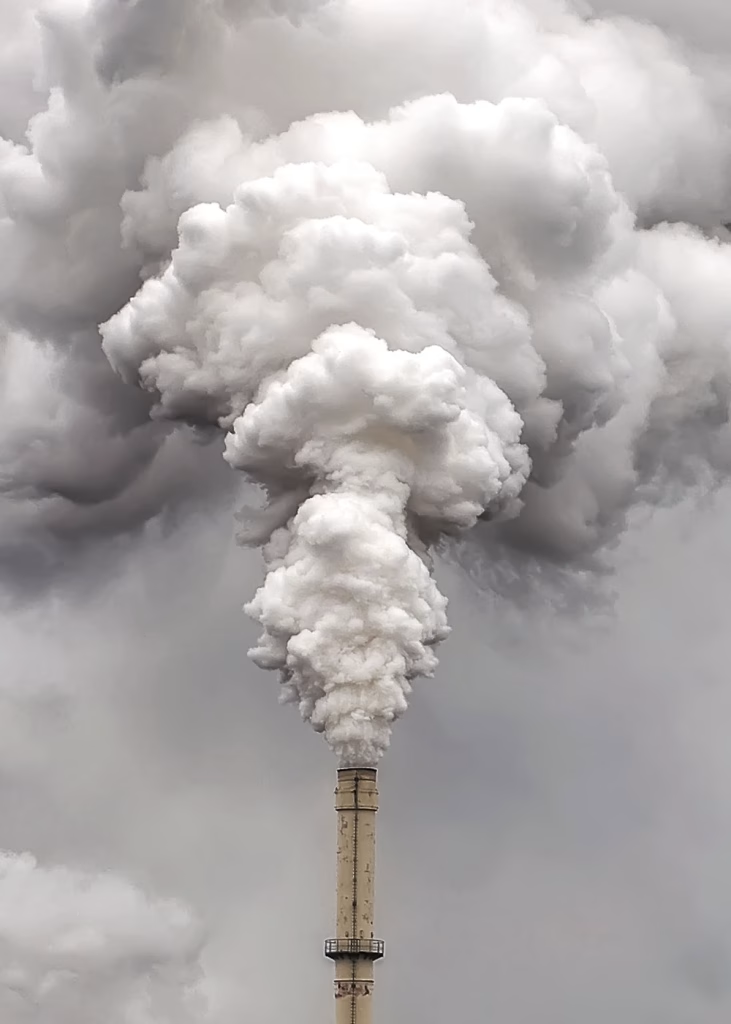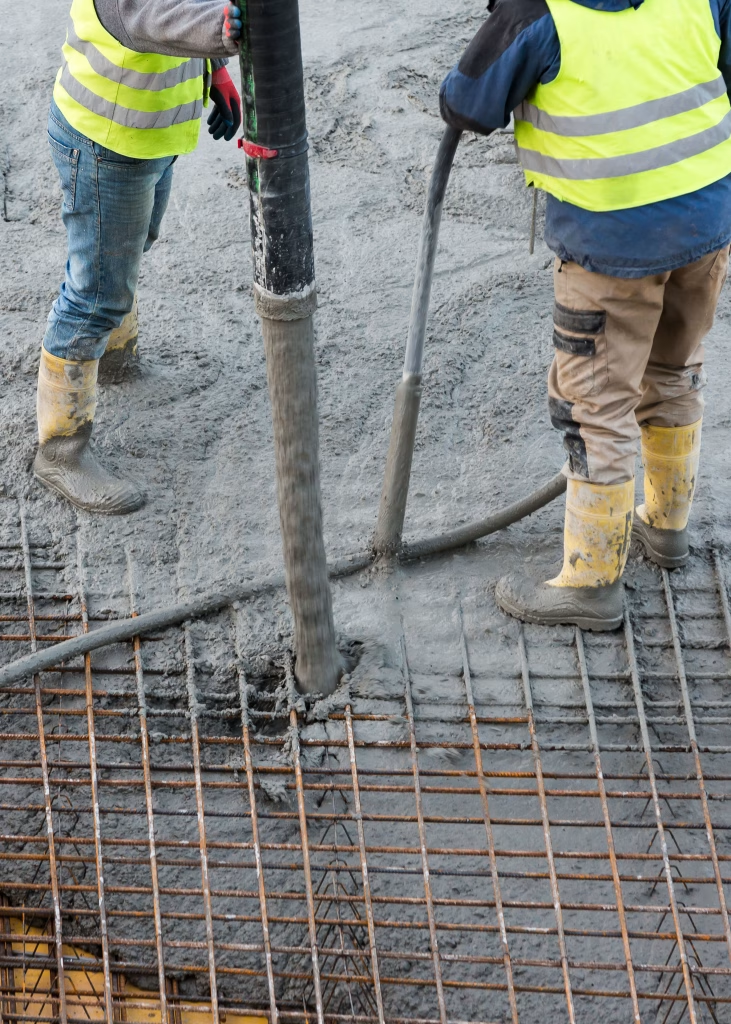An ambitious startup company emerging from the college is poised to pull carbon out of the atmosphere while producing more sustainable cement.
Bu Wang didn’t necessarily set out to launch a carbon-capture company that would attract millions of dollars from major climate-focused investment firms.
Back in the pre-pandemic days of 2019, the associate professor of civil and environmental engineering was exploring the prospects of capturing carbon dioxide from coal-fired power plants—a line of research that he found, unfortunately, didn’t lead anywhere viable because of economic realities.
Amid that investigation, though, one of Wang’s postdoctoral researchers, Raghavendra Ragipani, made a fortuitous discovery. Ragipani, now an assistant professor of chemical engineering at the Indian Institute of Technology Kanpur, was testing how quickly carbon dioxide reacted with coal fly ash—the waste product from coal plants—under various conditions. He found the reaction occurred remarkably faster when the ash had a higher pH (was more basic, or alkaline), a result that hadn’t been documented in existing scientific literature.

“Initially we were very surprised,” says Wang, whose work seeks to develop more sustainable materials. “We double-checked, triple-checked the results, but it turns out to be real.”
That bit of scientific happenstance set off a chain reaction that led Wang to co-found Alithic, a company that, with the assistance of the Wisconsin Alumni Research Foundation (WARF, UW-Madison’s technology-transfer partner) and outside investment, is poised to enter the growing carbon-capture industry.
The timing is welcome: After carbon emissions dropped during the pandemic, they’ve promptly rebounded and reached a new record high in 2024, according to the Global Carbon Project.
“There’s so much carbon in the atmosphere already that if we stopped today, if we had zero emissions today, we already have booked a lot of ocean-level rise and warming,” says Rob Anex, a professor of biological systems engineering in the College of Agricultural and Life Sciences and the other Alithic co-founder. “So we’re going to have to be able to draw down carbon.”
According to the Center for Climate and Energy Solutions, 30 commercial-scale carbon-capture facilities are in operation worldwide, with nearly a dozen more under construction and more than 150 in earlier stages of development. While various analyses put the current value of the global carbon-capture and sequestration industry anywhere between $2 billion and $6 billion, there is one clear consensus: It will continue to grow as companies like Alithic join the fray.
Many of the most developed firms focus first and foremost on removing carbon from the atmosphere, while relying on partners to handle the sequestration side of the puzzle. The Alithic team sees its closed-loop, capture-and-sequestration system as a differentiator.

In Alithic’s method, an air contactor pulls in carbon dioxide, which reacts with an alkaline hydroxide solution. The resulting carbonated solution, in turn, reacts with coal ash (or other industrial waste products; the Alithic team is testing many). That reaction generates a mineral byproduct that can replace cement in concrete. It also produces hydroxide that—looping back to the beginning of the process—sustains the carbon-capture step, which Wang says dramatically reduces the system’s energy requirements.
“When we first started, we weren’t starting from the direct-air capture side,” he says. “We were always focusing more on the removal side.”
As Wang and Anex both note, there are limited options for permanent carbon sequestration. The leading method, called geological sequestration, involves compressing the captured carbon dioxide into liquid form and then pumping it deep underground—requiring significant infrastructure. Other strategies use considerable energy (leading to more emissions) or land and haven’t shown the potential to make substantial dents in the world’s carbon equation.
“Sequestering carbon isn’t easy,” says Anex, who specializes in engineering process design, techno-economic analysis and life-cycle assessment. “I think we’ve thought about almost all the ways you can do it.”
Not only does Alithic’s mineralization method safely store carbon, but the mineral byproduct also could lower the carbon footprint of concrete production by replacing traditional cement, one of the key components in concrete. Cement manufacturing accounts for 8% of global carbon dioxide emissions, per the World Economic Forum.
“Customers want more and more to have low-carbon concrete, especially government entities and public authorities,” says Alithic CEO Quentin Philippe, noting that “supplementary cementitious material” is also less expensive than traditional Portland cement.

But, Anex says, the market for supplementary cementitious material differs by region, depending upon the availability of nearby industrial waste that’s needed to generate the cement replacement. In Alithic’s case, the quality of the supplementary cementitious material produced varies depending on the type of waste material that’s fed into the system. And, complicating matters further, the quality of that byproduct doesn’t correlate with the amount of carbon that’s captured in the process.
“You can capture more carbon dioxide out of the atmosphere and make poorer quality supplementary cementitious material, or vice versa,” says Anex, adding that carbon markets are both nascent and affected by the current geopolitical winds. “So, there are tradeoffs.”
With funding from the WARF Ventures program and lead investments from European venture capital funds Counteract and Kiko Ventures, Philippe says Alithic plans to build a demonstration facility in Madison within the first half of 2025. The company will follow that up by 2026 or 2027 with a larger pilot plant capable of capturing roughly 1,000 tons of carbon dioxide a year. Philippe aims for the company to eventually construct modular plants, both in the United States and abroad.
“My personal belief is after a decade, people will realize how desperately we’re going to need technologies like this,” says Wang. “But by then, if we want to start building a new technology, it will take another 10 years before we can scale it up to any meaningful scale. That will, in my opinion, be already too late. My hope for our technology is we will demonstrate it so that by the time people realize we need to remove carbon dioxide super fast, we have this technology ready to go.”